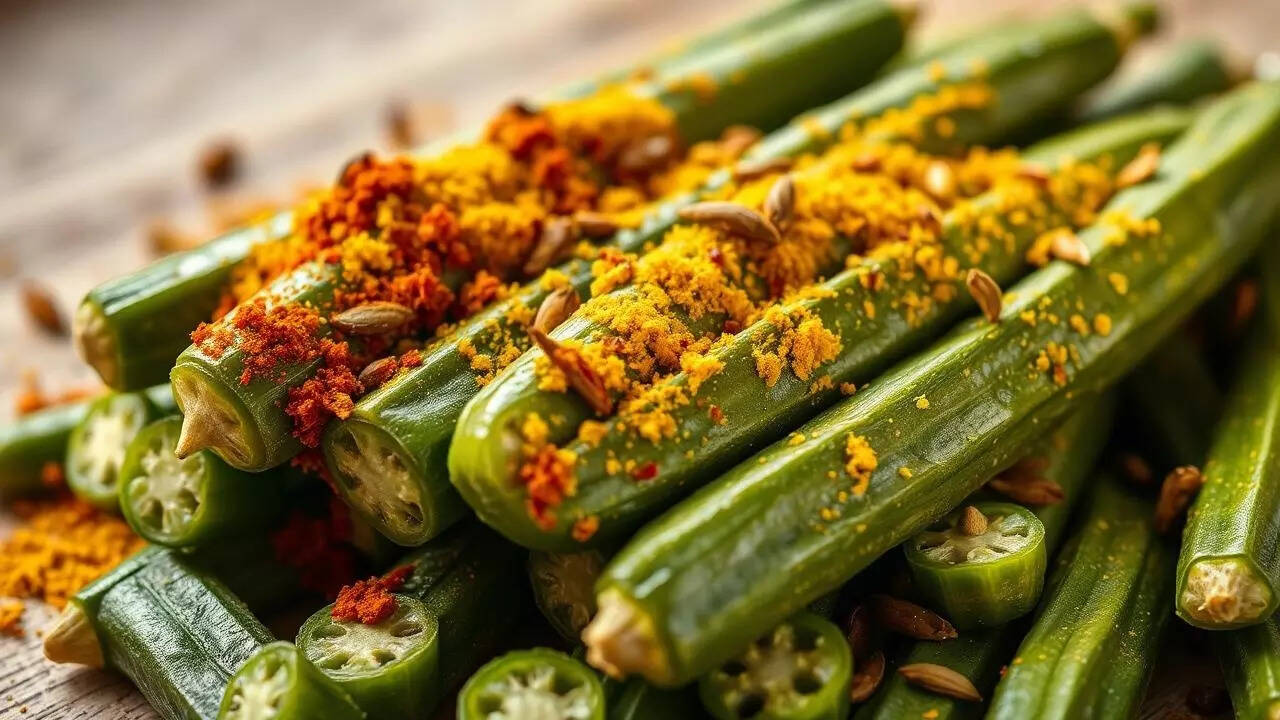How To Cook Non-sticky Bhindi Fry At Home Like A Pro
Bhindi fry , or fried okra, is one of India’s most beloved home-style dishes, appreciated for its crisp texture and flavourful spices. However, anyone who has cooked it knows the struggle of dealing with the sticky, slimy texture that okra tends to release when cut and cooked. With a few mindful steps and kitchen techniques, you can easily prepare bhindi fry that’s crisp, flavourful, and completely slime-free. Here’s how to perfect the art of making bhindi fry without the mess or stickiness.
Making bhindi fry without slime is less about luck and more about technique. Choosing fresh vegetables, drying them thoroughly, cooking on high heat, and using smart ingredients like amchur and gram flour can completely transform the dish. With these steps, you’ll have a crispy, golden, and flavour-packed bhindi fry that everyone at the table will love – minus the stickiness.

Choose Fresh And Tender Bhindi
The first step towards a perfect bhindi fry is selecting the right vegetable. Always go for fresh, firm, and tender bhindi pods. Avoid those that are soft, dull, or have brown patches, as they are more likely to release slime. A good way to check is to snap the tip of a pod – if it breaks cleanly, it’s fresh. The tenderness of the vegetable ensures even cooking and better texture when fried.Wash And Dry Thoroughly Before Cutting
Washing is necessary to remove dirt and pesticides, but moisture is the main culprit behind sliminess. After washing, spread the bhindi on a clean kitchen towel or tissue and let it dry completely. You can even air-dry it for 20–30 minutes. Never cut bhindi while it’s wet, as that triggers slime formation during cooking. The drier the vegetable, the crispier your bhindi fry will be.Use A Sharp Knife And Cut Uniformly
While chopping, use a sharp knife to minimise crushing the pods. Crushed bhindi tends to ooze more sticky liquid. Slice them evenly – too fine and they’ll overcook; too thick and they’ll remain chewy. Uniform pieces ensure consistent frying and a better mouthfeel in the final dish.Add Acidic Ingredients To Reduce Stickiness
Acidic ingredients like lemon juice, tamarind pulp, or amchur (dry mango powder) are natural agents that cut through the slime. Adding a teaspoon of amchur powder towards the end of cooking gives your bhindi a tangy flavour and helps absorb excess stickiness. You can also squeeze in some lemon juice once the bhindi is cooked for a refreshing twist.You may also like
- Indore tragedy: 25 transgenders consume phenyl in Indore; admitted to hospital
- Heart treatment is incomplete if you ignore this vital link: Cardiologist reveals a crucial connection for lasting health
- Shooting World Championship: Zoravar Singh Sandhu leads Indian challenge after Day 1 of Trap qualification
- Himachal Pradesh owned entity to receive Rs 401 crore in Wildflower Hall property case
- Apple Lobbying Centre To Relax Income Tax Laws
Cook On High Flame And Avoid Overcrowding
The way you cook plays a crucial role in getting slime-free bhindi. Always use a wide pan or kadhai and cook on a medium-high flame. Overcrowding traps moisture, leading to soggy and sticky bhindi. Instead, fry in small batches, allowing the pieces to cook evenly and crisp up nicely. Stir occasionally but avoid overmixing, as constant stirring releases more slime.Add Salt And Spices Later
Another common mistake is adding salt early. Salt draws moisture out of vegetables, which can make your bhindi sticky. To prevent this, cook the bhindi first until most of the stickiness disappears, and then add salt, turmeric, and other spices. This way, your seasoning sticks better, and the texture remains dry and crisp.Enhance Crispness With Gram Flour
For those who love extra crunch, adding a light coating of gram flour (besan) works wonders. Once the bhindi is partially cooked and no longer slimy, sprinkle a tablespoon or two of gram flour along with spices like red chilli powder, coriander powder, and cumin. Toss gently and let it fry for a few more minutes. The gram flour absorbs leftover moisture and gives a delicious crisp coating.Try Shallow Frying Instead Of Stir-Frying
If you prefer your bhindi even crispier, shallow frying is a great option. Heat a generous amount of oil in a wide pan, spread the bhindi evenly, and fry until golden and crisp. The oil acts as a barrier against moisture, helping to reduce slime. Drain excess oil on tissue paper before serving.Pair With Simple Indian Meals
A perfectly cooked bhindi fry pairs beautifully with dal, roti, or even curd rice. Its crunchy texture and spiced flavour add a satisfying contrast to simple Indian meals. You can also serve it as a side dish with chapati and pickle for a quick weekday lunch.Final Touch For Perfect Bhindi Fry
Once cooked, garnish the bhindi fry with a sprinkle of garam masala or a dash of chaat masala. This enhances the aroma and adds a final layer of flavour. Serve it hot for the best taste, as reheating can make it lose its crispness.Making bhindi fry without slime is less about luck and more about technique. Choosing fresh vegetables, drying them thoroughly, cooking on high heat, and using smart ingredients like amchur and gram flour can completely transform the dish. With these steps, you’ll have a crispy, golden, and flavour-packed bhindi fry that everyone at the table will love – minus the stickiness.









